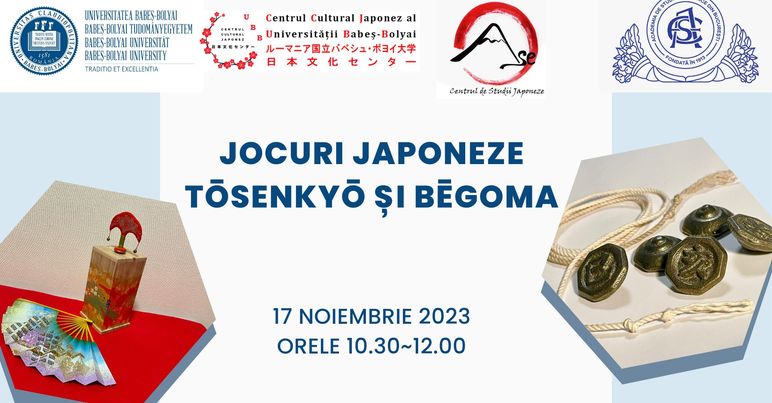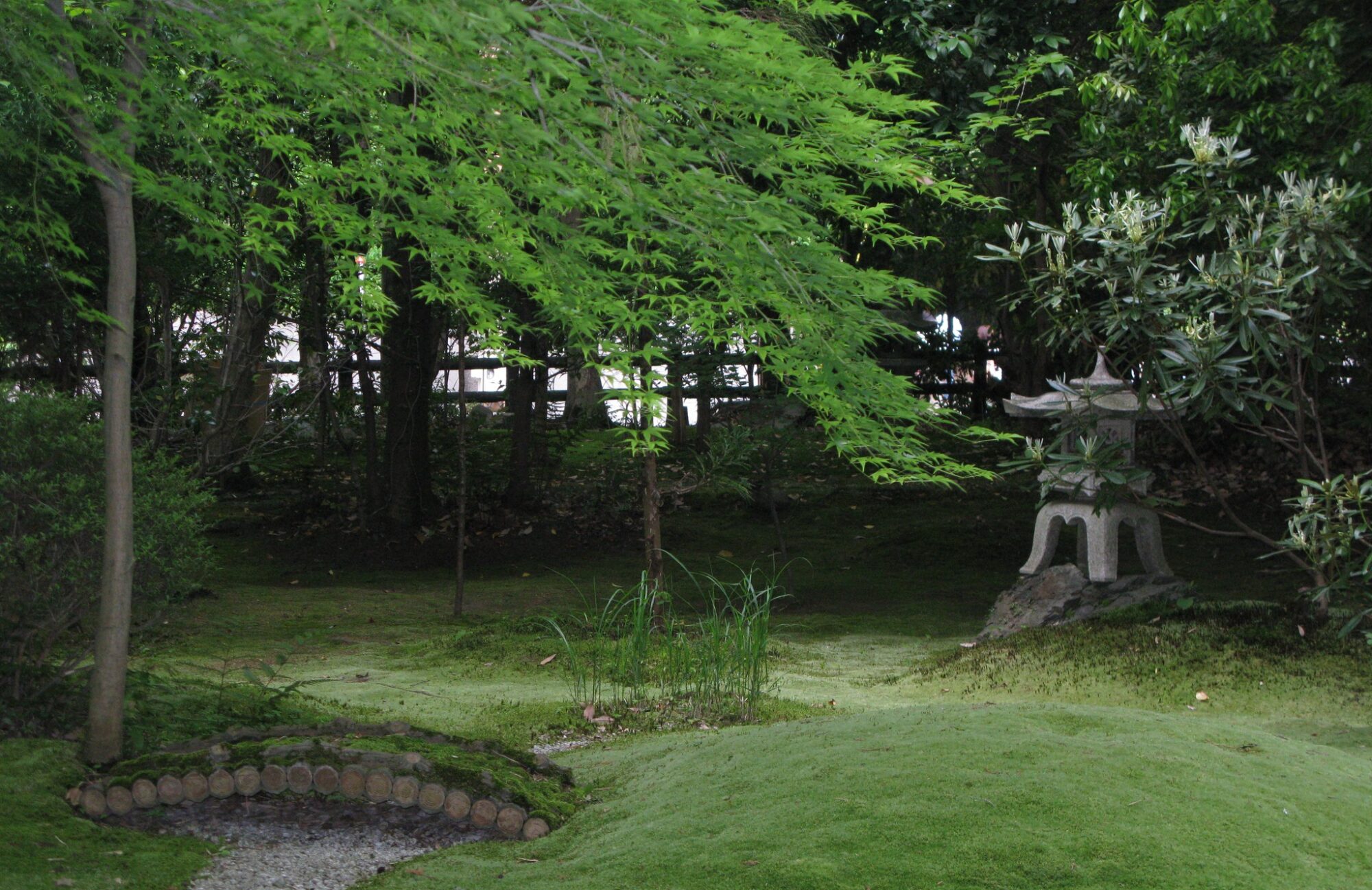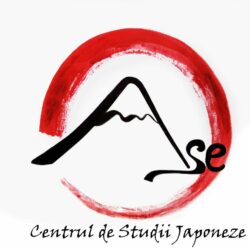On November 17, 2024, the ASE Center for Japanese Studies, together with the Japanese Cultural Center of Babeș-Bolyai University in Cluj-Napoca, organized a demonstration of traditional Japanese games accompanied by explanations.
Tōsenkyō is a traditional Japanese game with a history of approximately 300–400 years. It was initially played by nobles in Kyōto and later spread to Edo (modern-day Tōkyō). The game is simple, involving three main components: fans, a butterfly (target), and a wooden base (cushion). From a certain distance, players throw open fans toward the target, and the score is calculated based on the relative positions of these three components.
Bēgoma are Japanese spinning tops often decorated with ideograms. Originally made from spiral shells filled with sand, these tops date back to the Heian period (794–1185). Playing with metal bēgoma remains a popular pastime today.
The demonstrations and explanations were provided by Dr. Yusuke SUMI, director of the Japanese Cultural Center at Babeș-Bolyai University, and Ryōta Yamazaki, a student at Nagaoka University of Technology.


